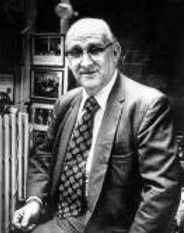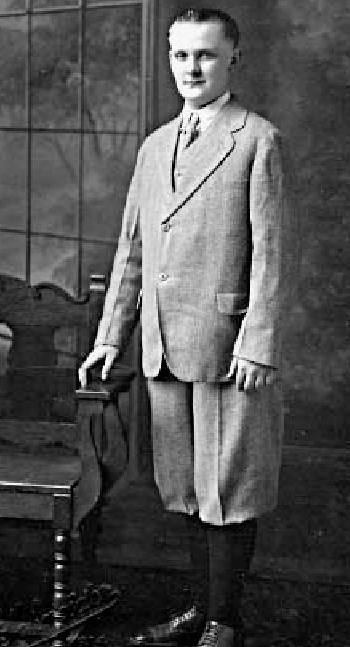
More Recent Photo

Yearbook Photo

More Recent Photo

Yearbook Photo
Dr. Otto Schmitt attended Roosevelt High School from 1927 to 1930, withdrawing after his 7th semester to enroll in Washington University. His parents, Otto Franz Schmitt and Clara Schmitt were second generation owners of Southside Wallpaper and Paints, located at 3259 California St, at Utah St. His brother, Francis Otto Schmitt, was ten years older and very influential in Dr. Schmitt’s life.
Born in 1913, Dr. Schmitt showed an early interest in electricity, conducting experiments in the family home above the paint store. He soon became an “electronics prodigy.” Francis was a Washington University graduate and a zoology professor there while Dr. Schmitt was studying at Roosevelt. Dr. Schmitt frequently assisted Francis with various research projects which caught the attention of other professors. With their encouragement, Dr. Schmitt took Washington University’s entrance exam earlier than allowed by age. He easily passed and enrolled in Washington University at 17 years of age. Dr. Schmitt’s Wikipedia page reports he graduated from Roosevelt on September 18, 1930, indicating it was a special diploma outside of a normal graduation, if true. Regardless, numerous other sources report Dr. Schmitt attending Roosevelt High School.
Dr. Schmitt published eight scientific papers during his undergraduate years. One paper was published in the prestigious journal Science before his eighteenth birthday. He received his bachelor’s degree in zoology and physics in 1934. He was awarded a Ph.D. in 1937, also in zoology and physics, along with mathematics as a secondary focus.
From 1937 to 1939, Dr. Schmitt did postdoctoral work at the University College of London. He married Viola Muench (Soldan High grad) in 1937.
In 1939, Dr. Schmitt took a position with the University of Minnesota as Chair of the new Department of Biophysics performing both teaching and research duties. He soon left that position when World War II broke out to do research for the U.S. Army’s National Defense Research Committee and the aircraft division of the Airborne Instruments Laboratory. During this period, he designed a system, using magnetics, to detect German submarines. He also developed a system of low-level radio transmissions to confuse German radar operators to distract and confuse them.
He returned to the University of Minnesota in 1947, where he taught and conducted research until his retirement in 1983. Viola served as his unpaid research assistant. She passed away in 1995. They had been married 58 years. Dr. Schmitt passed away in 1998.
Following Francis’ interest in physiology, specifically the study of nerve fibers, Dr. Schmitt switched to this area of research. Dr. Schmitt, using his talents for electrical engineering, “sought to mimic in an artificial circuit the functioning of the nervous system and more precisely a state of formation and propagation of impulses along a network of nerve fibers (WIKI).” In doing so, Dr. Schmitt discovered new forms of electric circuits in use today.
Known as the “Schmitt Trigger,” this discovery (in simple terms) is a method to quiet electrical circuits to make them more efficient, thus converting analog signals to a digital constant electronic signal in an on/off state, 1 to 0 and 0 to 1. Although patented, Dr. Schmitt allowed this trigger to be used by others and used in billions of computers and electronic devices worldwide, making their processors work more smoothly. You are probably using Dr. Schmitt’s trigger as you read this.
His research also led to the invention of an oscilloscope that improved electrocardiograms by converting ECG results from two dimensions to a three-dimensional graph making diagnostics more effective.
Dr. Schmitt obtained sixty patents during his career and wrote or contributed to almost 270 research papers. He helped found several professional societies including the Biomedical Engineering Society and the Biophysical Society, among others. He was inducted into the Minnesota Inventors Hall of Fame in 1978 and was admitted to the prestigious National Academy of Engineering in 1979.
Dr. Schmitt was a member of the Space Science Board Biology and Psychology Advisory Panel, Chair of the Bioastronautics Executive Council of the Joint Armed Forces-National Academy of Science, Scientific Member of the Board of Directors of Douglas Aircraft, and President of the Board of Directors of the Inventors and Technology Transfer Society.
As can be seen by Dr. Schmitt’s many accomplishments in science and education, he is a prime example of achievement and is a credit to Roosevelt High School.